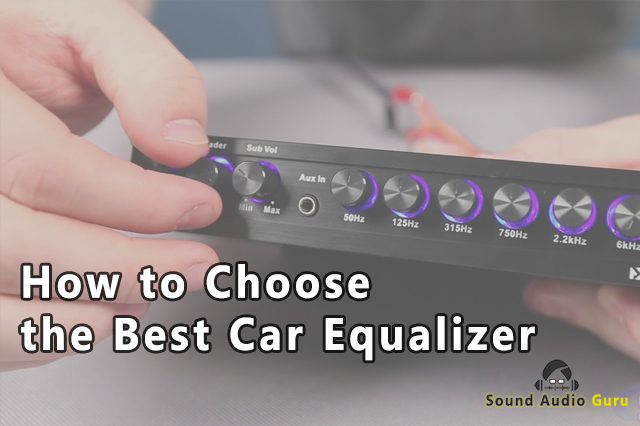Equalizers are a great tool to adjust the tone of your car stereo. If your music sounds a little too bass-y, you can use an equalizer to boost the treble and midrange.
Today’s vehicles come with several types of equalizers. The most common ones are in-dash and under-dash equalizers. Some manufacturers also offer digital equalizers that can be installed in the trunk or cargo area. Regardless of the type, these devices work with any aftermarket stereo system or any factory car audio.
When buying an equalizer, you try to buy the one that costs the least and gives the best overall improvement in your car’s sound. The value of an equalizer is reflected in how much it improves audio performance. There are several key features to look for, and you should consider these factors so that the equalizer achieves the required improvements.
The purpose of a car equalizer is to make the sound system you installed in your car sound better. It does not increase the volume of your speakers, nor does it boost their power. The equalizer is designed to add bass and balance out the frequencies of the music you are playing.
When choose the best car equalizer, there are some key factors to consider. They are briefly listed below:
Type of car equalizer
Car equalizers are of two main types: parametric equalizers and graphic equalizers. A parametric equalizer gives you more control over the sound. It is designed to allow you control over the boost, bandwidth, and center frequencies.
Graphic equalizers are extremely precise, allowing audio engineers to tune the audio spectrum in specific ways. They have filters that help to adjust the audio according to the frequency bands. Graphic equalizers often come with sliders, which allow users to make adjustments without any difficulty.
The type of equalizer you use depends on your experience with equalizers. Generally, graphic equalizers are simpler to use than parametric EQs.
Number of bands
The number of bands on an equalizer determines how many sliders it has. A 4-band EQ has 4 sliders. A 7-band EQ has 7 sliders. The more the sliders, the more frequencies you can control.
Mounting location
There are a lot of different places you can put your car stereo. You have to pick one that works with what’s already in your car. Some dash-mounted stereos can go on top or below the receiver. Others need special kits to fit below the dash. Truck-mounted stereos work with remotes so you can adjust them from the driver’s seat.
Filters
A high-frequency filter is located on the front and rear channels. It allows certain frequencies to go to small speakers, while restricting others. The filter allows high frequencies to pass through it, while keeping low frequencies from doing so.
I would recommend EQs with filters. They will help the subwoofer and the speaker to produce better sound.v. Audio controls
When shopping for an equalizer, look for one with as many controls as you can find. The more controls it has, the more control you’ll have over the sound of your music. We’ve added a few additional useful tips to help you get the most out of the equalizer you choose.
If you want to prevent annoying noises, buy a good-quality EQ. If you’re worried about faulty installation causing unwanted noises, check your connections. Check to make sure that all cables and screws are tight.
You should try the EQ before you buy it. Digital systems have different performance levels, and it’s tough to tell which one will be best for your business until you try a few.
When you set up your sound system, make sure you position all the components right. Speakers and amplifiers should be placed where they can actually benefit from an equalizer. Faders and music blockers are essential for the best audio quality.
Reference:

1 thought on “How to Choose the Best Car Equalizer”